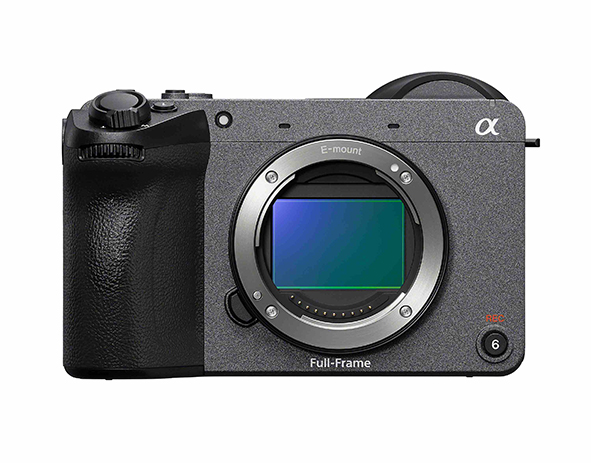Sony Introduces FX2 Compact Camera
Entry-level offering joins Sony’s Cinema Line family of products

Sony announced the latest addition to its Cinema Line family, the FX2. The camera, designed as an entry-level product in the broader Cinema Line range, will be available for preorders on May 29 priced at $2,699 for the body only.
“The FX2 was created based on user feedback and is engineered with unique features to support filmmaking, a new eyepiece and improved usability for versatile production needs,“ Jun Yoon, head of digital imaging at Sony Australia and New Zealand, said. “The FX2 is intended to continue the Cinema Line’s goal of preserving authentic emotion in every shot and empower creators across all areas of content production.”
Like other Cinema Line cameras, the FX2 comes with a full-frame sensor that delivers stunning imagery and bokeh effects. The new camera is equipped with a 33.0 effective megapixel back-illuminated Exmor R sensor and up to 15-plus stops of wide latitude using S-Log3, capturing impressive detail in both highlights and shadows, Sony said.
The camera is equipped with Dual Base ISO for S-Log 3 of 800 and 4,000, enabling optimal image quality across varied lighting conditions. The FX2 ISO sensitivity for video can be expanded up to 102,400, making it ideal for low-light environments. The camera also supports multiple recording formats for flexible post-production workflows and records in 4:2:2 10-bit All-Intra and supports formats like XAVC S-I DCI 4K at 24.00 p, among others, Sony said.
The FX2 benefits from an extended shooting capability, with up to 13 hours of continuous recording in 4K 60p[2], due to its internal cooling fan and effective heat dissipation structure. The FX2 also offers variable frame rate settings, allowing up to 60 fps in 4K (for a maximum 2.5 times slow-motion effect) and up to 120 fps in Full HD (for up to 5 times slow motion). It supports Log shooting in Cine EI, Cine EI Quick, and Flexible ISO modes, offering versatile workflows for different production needs. To further the cinematic expression of the camera, creatives can import up to 16 user LUTs for on-camera preview for video, enabling precise color monitoring on set.
Sony noted that filmmakers can also easily and quickly create in-camera cinematic looks, with S-Cinetone set as the default, along with a range of Picture Profile and Creative Look presets. A desqueeze display function is available, supporting both 1.3 times and 2.0 times anamorphic lenses for accurate framing.
The FX2 features the same compact, flat-top design as Sony’s Cinema Line FX3 and FX30 cameras, ensuring familiarity and compatibility across setups. Built-in mounting points (UNC 1/4-20 x3) support a cageless configuration and ability to mount on a tripod, offering greater flexibility for rigging, Sony said.
The professional video industry's #1 source for news, trends and product and tech information. Sign up below.
A top handle (model XLR-H1) enhances mobility and control, especially during handheld or dynamic shooting. Its lightweight, portable build—measuring 129.7 x 77.8 x 103.7 millimeters and weighing around 679 grams—makes it ideal for solo operators or small crew productions.
The camera also offers advanced focus features designed for precision and creativity. Its new Real-time Recognition AF delivers fast and reliable performance, with improved accuracy for human subjects, although its intelligent subject recognition extends to animals, birds, vehicles and insects, with an Auto mode available for effortless detection, Sony rsaid.
The Sony FX2 is available for pre-order in two configurations. There is a body-only option for $2,699.99 and a second SKU that includes the XLR handle for $3,099.99.
For more information about Cinema Line visit here.
A YouTube video on the camera is available below.
George Winslow is the senior content producer for TV Tech. He has written about the television, media and technology industries for nearly 30 years for such publications as Broadcasting & Cable, Multichannel News and TV Tech. Over the years, he has edited a number of magazines, including Multichannel News International and World Screen, and moderated panels at such major industry events as NAB and MIP TV. He has published two books and dozens of encyclopedia articles on such subjects as the media, New York City history and economics.




